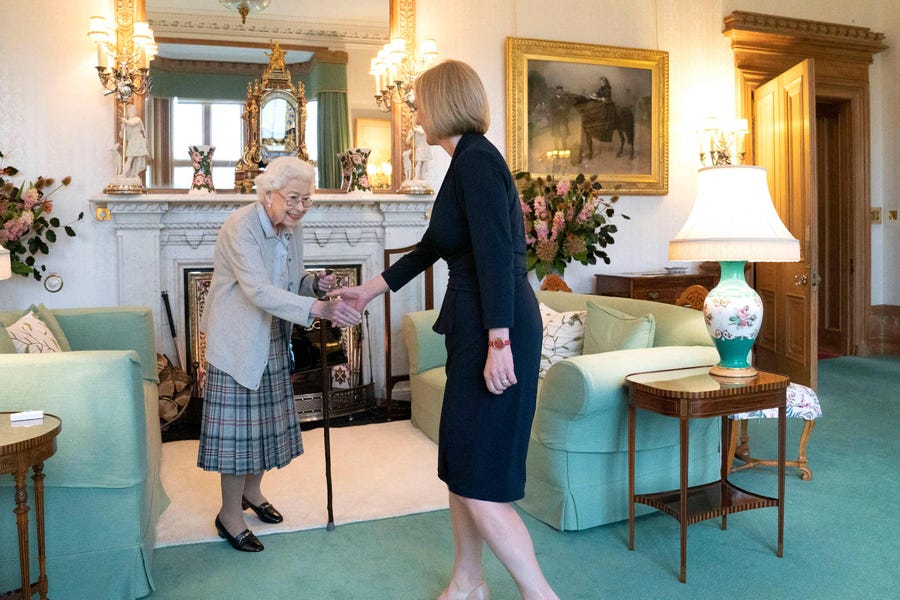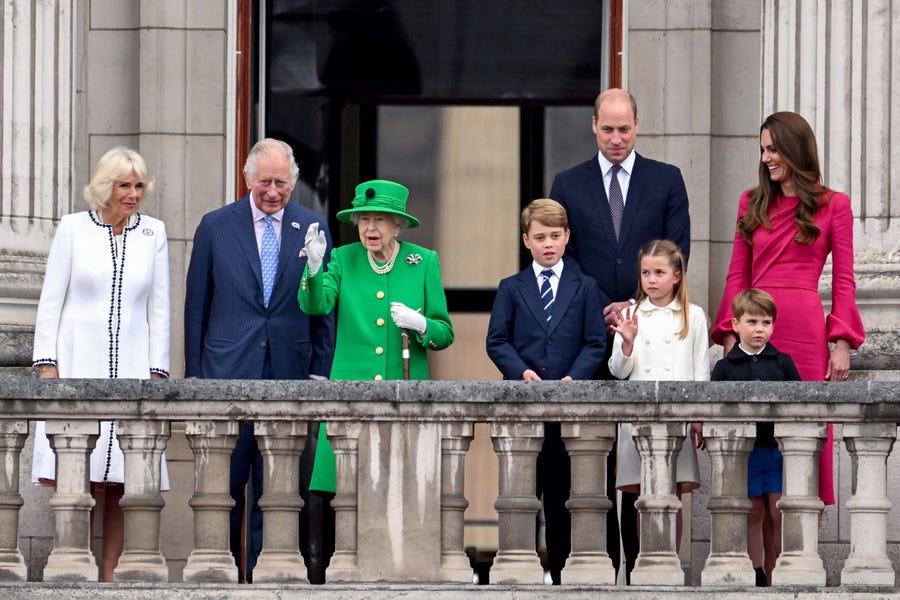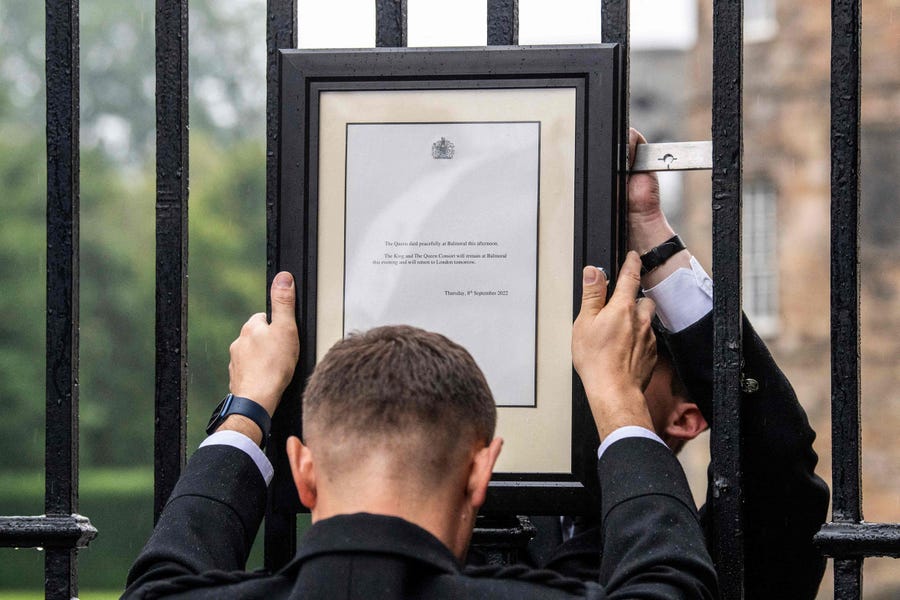 |
| |
| |
| |
| |
| |
| |
| Queen Elizabeth II has died. Britain's longest-serving monarch, 96, signified stability for Britain as it battled storms of the modern age. 🙋🏼♀️ I'm Nicole Fallert, welcome to a special edition of Daily Briefing looking back at the Queen's life — and the future of the monarchy. |
The end of Queen Elizabeth II's 70-year reign |
| The era Queen Elizabeth II, the only monarch most of her subjects have ever known, is over. Elizabeth Alexandra Mary Windsor died Thursday at Balmoral Castle. The 41th British monarch since William the Conqueror in 1066, she was the symbol of stability as Britain and its near 1,000-year-old monarchy sailed through roiling storms of history. She reigned, never ruled, as Britain's head of state and constitutional figurehead for decades. A modest, even shy girl, she became the most famous woman in the world, the most photographed and depicted human being in history, who met and shook hands with an estimated 4 million people or more during her reign. Read more |
| |
 | | Queen Elizabeth II greets Liz Truss, her 14th prime minister and Britain's third woman premier, when she arrived at the queen's Balmoral Castle in Scotland on Sept. 6, 2022, to be invited to form a new government. | | JANE BARLOW, POOL/AFP via Getty Images | |
What happens next? The Queen's eldest son, Prince Charles, is king |
| At the moment of the sovereign's death, her eldest son and heir, Prince Charles the Prince of Wales, instantly becomes Britain's 41st monarch. The ascension of Prince Charles to the throne of the United Kingdom promises to have a seismic effect on the roles of other royals orbiting the crown. Succession isn't the issue. It's a simple matter of everyone in line moving up one step as Prince Charles becomes King Charles III. Next up, of course, is his firstborn son, Prince William, and then William's firstborn son, Prince George. And so on. But the looming question is what roles and duties will be taken on by royal relatives under a king who has been vocal about scaling back the British monarchy. |
| |
 | | At Queen Elizabeth II's Platinum Jubilee celebrations in London on June 5, 2022. From left, Duchess Camilla, Prince Charles, Prince William, Duchess Kate and their children, Prince George, Princess Charlotte and Prince Louis. | | Leon Neal/Pool photo | |
Queue Operation London Bridge |
| The death of the monarch is simultaneously the birth of a new reign; as one set of Britain's ceremonial maestros prepare for the funeral of the queen, another set are working on Operation Spring Tide, the separate plan for the rituals accompanying the accession of King Charles III. Operation London Bridge, as the queen's funeral plan is known, involves a minute-by-minute agenda for the days following her death. The queen's coffin will be transferred and she will lie in state on a purple-draped catafalque in Westminster Hall before her funeral at Westminster Abbey 10 days after her passing. |
| |
 | | A notice is placed on the gates of the Palace of Holyroodhouse in Edinburgh, on Sept. 8, 2022 following the announcement of the death of Britain's Queen Elizabeth II. | | LESLEY MARTIN, AFP via Getty Images | |
A look at the monarch's life and legacy |
| Queen Elizabeth has lived through some remarkable moments. From her coronation on international television in 1953 to the first of her iconic Christmas addresses in 1957 to Princess Diana's death in 1997, she has defined her legacy as a consistent leader amid decades of changing family dynamics and defining world events. Click here for a gallery of the monarch from her coronation to "The Crown" portrayal. |
| |
 | | Her coronation took place on June 2, 1953, in Westminster Abbey, where British monarchs are crowned. | | AP | |
| Nicole Fallert is a newsletter writer at USA TODAY, sign up for The Daily Briefing here. Want to send Nicole a note? Shoot her an email at NFallert@usatoday.com or follow along with her musings on Twitter. Support journalism like this – subscribe to USA TODAY here. |
| Associated Press contributed reporting. |
| |
| |
| |
No comments:
Post a Comment